Explore the making of the ‘Blushing Bar’ for Wallpaper* Handmade X
Collaborators Chan + Eayrs, Sebastian Cox and American Hardwood Export Council use unique methods for staining and composing the timber structure
Catherine Hyland - Photography
It is lunchtime at Sebastian Cox’s workshop in Greenwich, south-east London, and Cox, his studio co-director and wife Brogan, along with architects (and work and life partners) Zoe Chan and Merlin Eayrs are sat around a communal table. A spread of falafels and sweet potato fries has been laid out, but even so, the gentle smell of freshly cut wood seems omnipresent. It neatly highlights Cox’s passion for British woodlands and his expertise in working with timber. Almost everything around us is made out of wood – a mix of display items, working models and the workspace’s furniture.
Chan and Eayrs, Cox and the American Hardwood Export Council (AHEC) collaborated on the largest piece in this year’s Wallpaper* Handmade show in Milan, the ‘Blushing Bar’. And while timber is the main protagonist in this project, too, there’s plenty in its design to make the structure really stand out within the workshop – from the unusual and perfectly executed design, to the species itself (American red oak, which is largely unknown in Europe), and the methods applied (as hinted by the strange pinky red ink stains on the floor and walls around us).
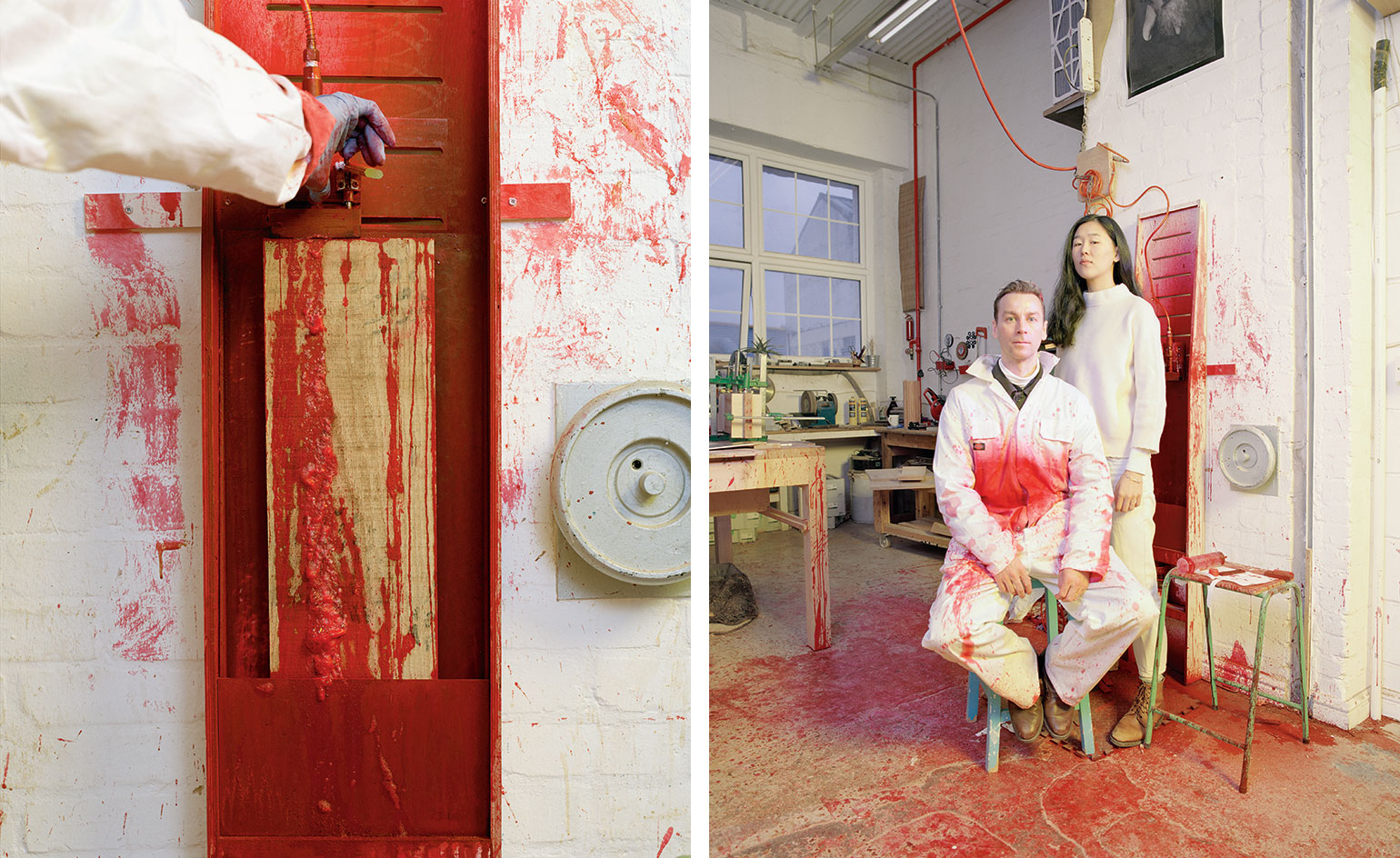
Left, a custom-designed machined required for use on the American red oak bar planks. Right, Merlin Eayrs and Zoe Chan in Sebastian Cox’s Greenwich studio during the injected ink process. Photography: Catherine Hyland
‘We wanted to challenge the idea of the linear bar that acts as a boundary between the bartender and the public, and also its materiality,’ says Chan. ‘So we started with an open mind and wanted to see what the conversations with Seb led to. Our approach was informed by our first meeting with him and David [Venables, AHEC’s European director], who told us about the properties of red oak. We always like to integrate making techniques into our design process.’
Created in close collaboration with Cox, who lent his supreme woodworking skills to the project, the design makes the most of the porous nature of American red oak. Using a specially conceived machine, Cox and his team ‘injected’ red ink into the planks, introducing a unique way of colouring them, which is drastically different from more conventional methods of staining. The result is a structure that features hot pink ‘veins’, where colour has been pressed into the planks to create a ‘blushing’ effect. It brings to mind first dates and romantic encounters over a drink, subtly referencing the love theme of Wallpaper* Handmade X.
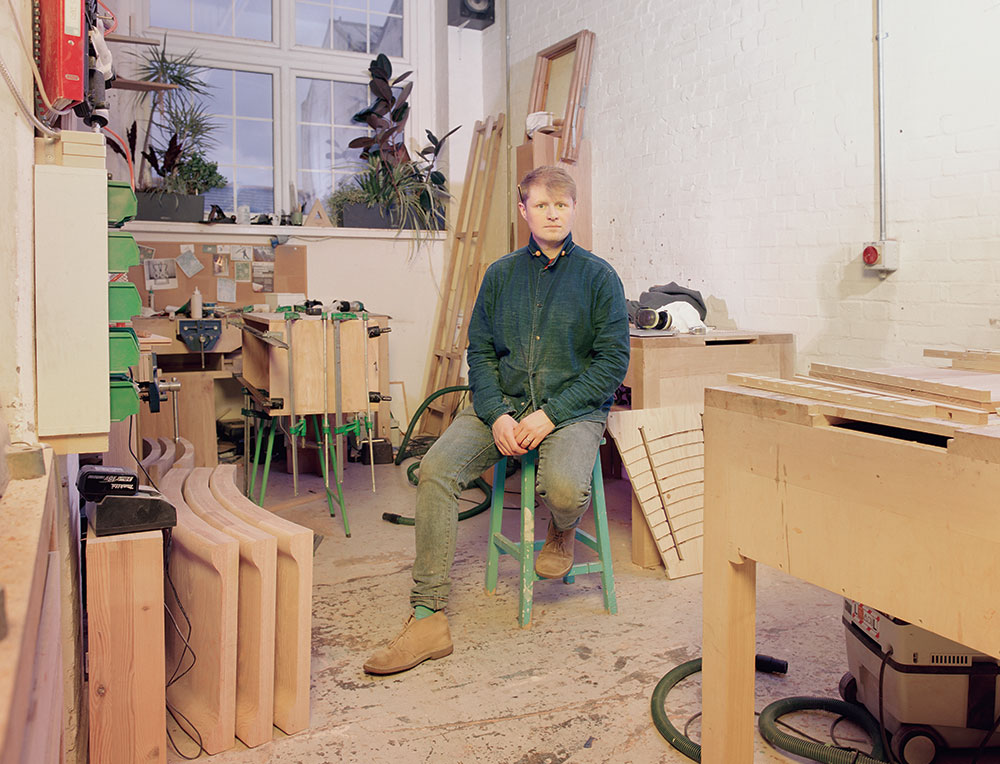
Sebastian Cox in his workshop with pre-assembled pieces from the bar. Photography: Catherine Hyland
Chan and Eayrs were very hands on in the building process, blurring the boundaries between designer and maker. Their holistic approach to architecture means they are personally involved in every step of the design and building process, often acting as clients, architects and developers at the same time – even, on occasion, living in a project as it develops, before moving on to the next one. ‘I guess we are not like traditional architects, handing over a design to a contractor,’ says Eayrs. ‘With our buildings, we are also the contractor, so we are always very involved. Being so involved in this project for us was key, as it enabled us to refine the design as we were making it with Seb. Because of the circular nature of the bar, there are very few right angles, so everything was complicated, but also quite fascinating. It has been very inspirational for us.’
Cox has an all-inclusive, flexible approach, bringing together contemporary design and bespoke woodworking, and mixing roles and disciplines with ease. ‘What’s interesting is that, on principle, I refuse to stain wood to have, say, ash pretending to be mahogany,’ he says. ‘However, for this piece, we tried different methods of colouring, like soaking, but, in the end, the injecting works very well. It was a long process before I could confidently say we could colour it. We are designers and makers, and this element of experimentation gave us a role beyond that of a manufacturer. It offered a great opportunity to be really collaborative.’
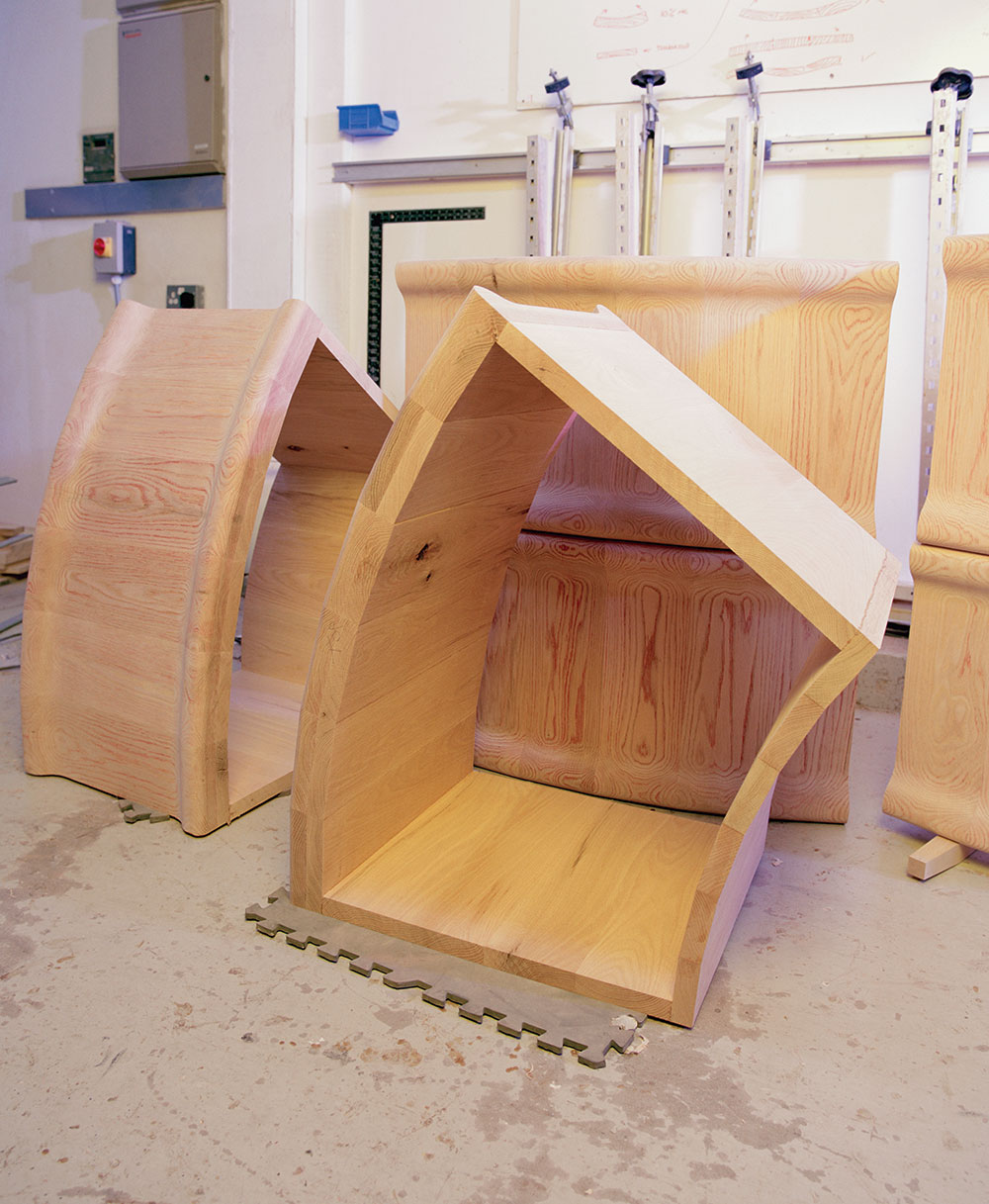
Some of the ten freestanding modules that make up the bar’s structure. Photography: Catherine Hyland
The two sides took full advantage of the opportunities presented by this timber species. ‘From our perspective, red oak is undervalued in Europe,’ says Venables. ‘Not necessarily in terms of cost – although it does represent great value at the moment as it is more affordable than other oaks – but in what it can offer as a material for design. This species is very important sustainability-wise as it accounts for nearly 20 per cent of all the hardwood found in American forests. Not only is it abundantly available but, when it comes to performance and properties, it’s just as good as other oaks. In fact, when it comes to making processes, such as staining, turning and steam bending, it’s even better.’
The special finish achieved by injecting ink into the wood is a first for a design product
The resulting bar, which is made from ten freestanding modules (neatly referencing Handmade’s tenth anniversary), offers a variety of equipment and resources, from sinks and chopping boards to flower beds and herb gardens. Many different techniques were used, from CNC-cutting and steam bending to thermal modification and coopering. The elements of the structure are many and modular, but they all fit together to absolute perfection. ‘It’s so precise that it almost feels like it’s carved out of wood,’ says Eayrs.
‘The bar is a perfect example of what can be accomplished by bringing together the best of design, creativity and craftsmanship,’ says Venables. ‘The special finish achieved by injecting ink into the wood’s cell structure is a first for a design product. It was exciting to be part of something experimental.’
As originally featured in the August 2019 issue of Wallpaper* (W*245)
INFORMATION
Receive our daily digest of inspiration, escapism and design stories from around the world direct to your inbox.
chanandeayrs.com; sebastiancox.co.uk; americanhardwood.org
Ellie Stathaki is the Architecture & Environment Director at Wallpaper*. She trained as an architect at the Aristotle University of Thessaloniki in Greece and studied architectural history at the Bartlett in London. Now an established journalist, she has been a member of the Wallpaper* team since 2006, visiting buildings across the globe and interviewing leading architects such as Tadao Ando and Rem Koolhaas. Ellie has also taken part in judging panels, moderated events, curated shows and contributed in books, such as The Contemporary House (Thames & Hudson, 2018), Glenn Sestig Architecture Diary (2020) and House London (2022).
-
 In BDSM biker romance ‘Pillion’, clothes become a medium for ‘fantasy and fetishism’
In BDSM biker romance ‘Pillion’, clothes become a medium for ‘fantasy and fetishism’Costume designer Grace Snell breaks down the leather-heavy wardrobe for the Alexander Skarsgård-starring Pillion, which traces a dom/sub relationship between a shy parking attendant and a biker
-
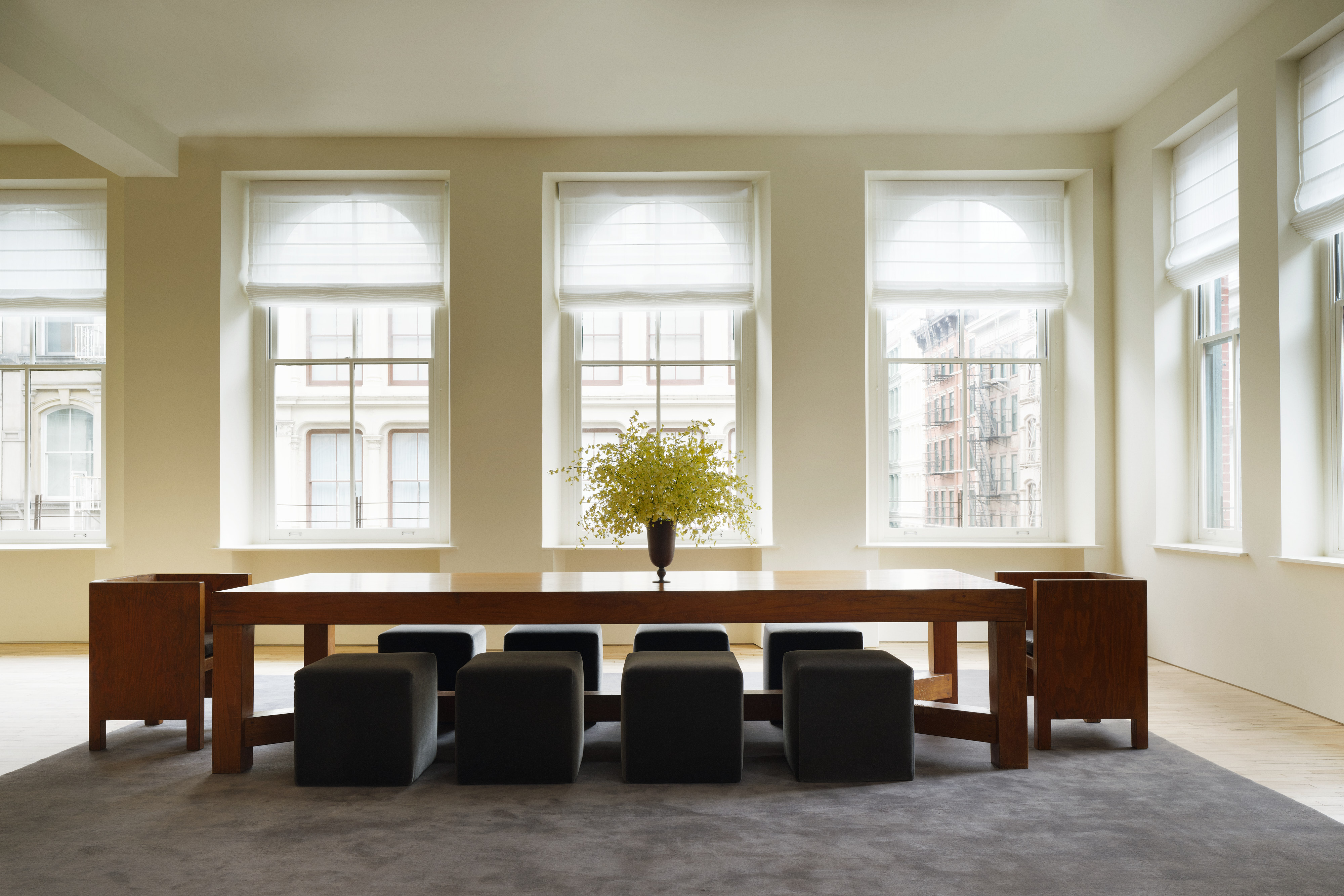 Tour Aflalo’s first retail space, a gallery-like studio in New York
Tour Aflalo’s first retail space, a gallery-like studio in New YorkLight-filled and elegant, Aflalo has opened its first retail space in a classic Soho loft, reimagined by Nordic Knots Studio
-
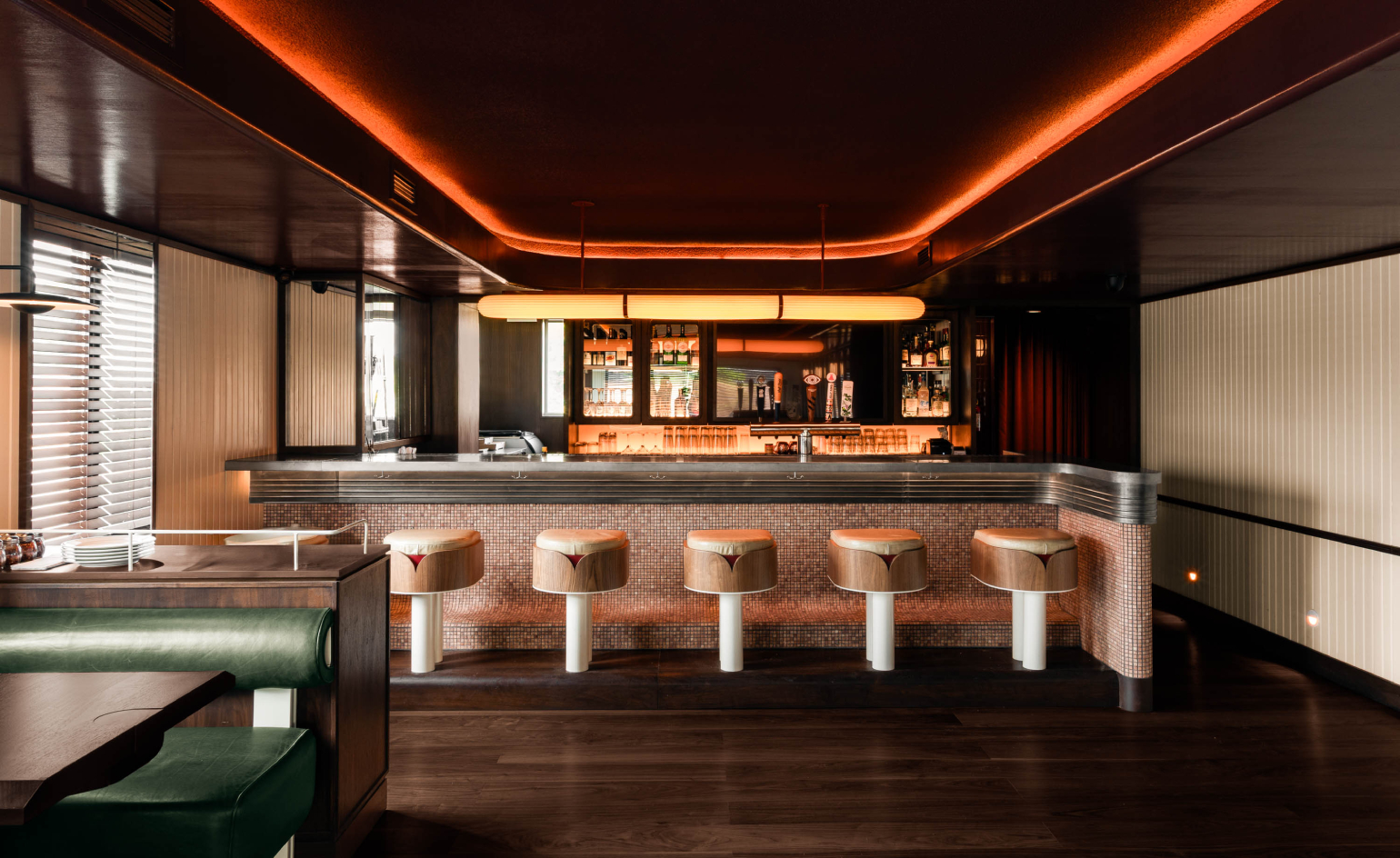 This Toronto pizzeria hides a sultry bar with serious bite
This Toronto pizzeria hides a sultry bar with serious biteNorth of Brooklyn unveils a fresh, two-level outpost where crisp, light-filled minimalism gives way to a warmer, neon-lit upstairs area
-
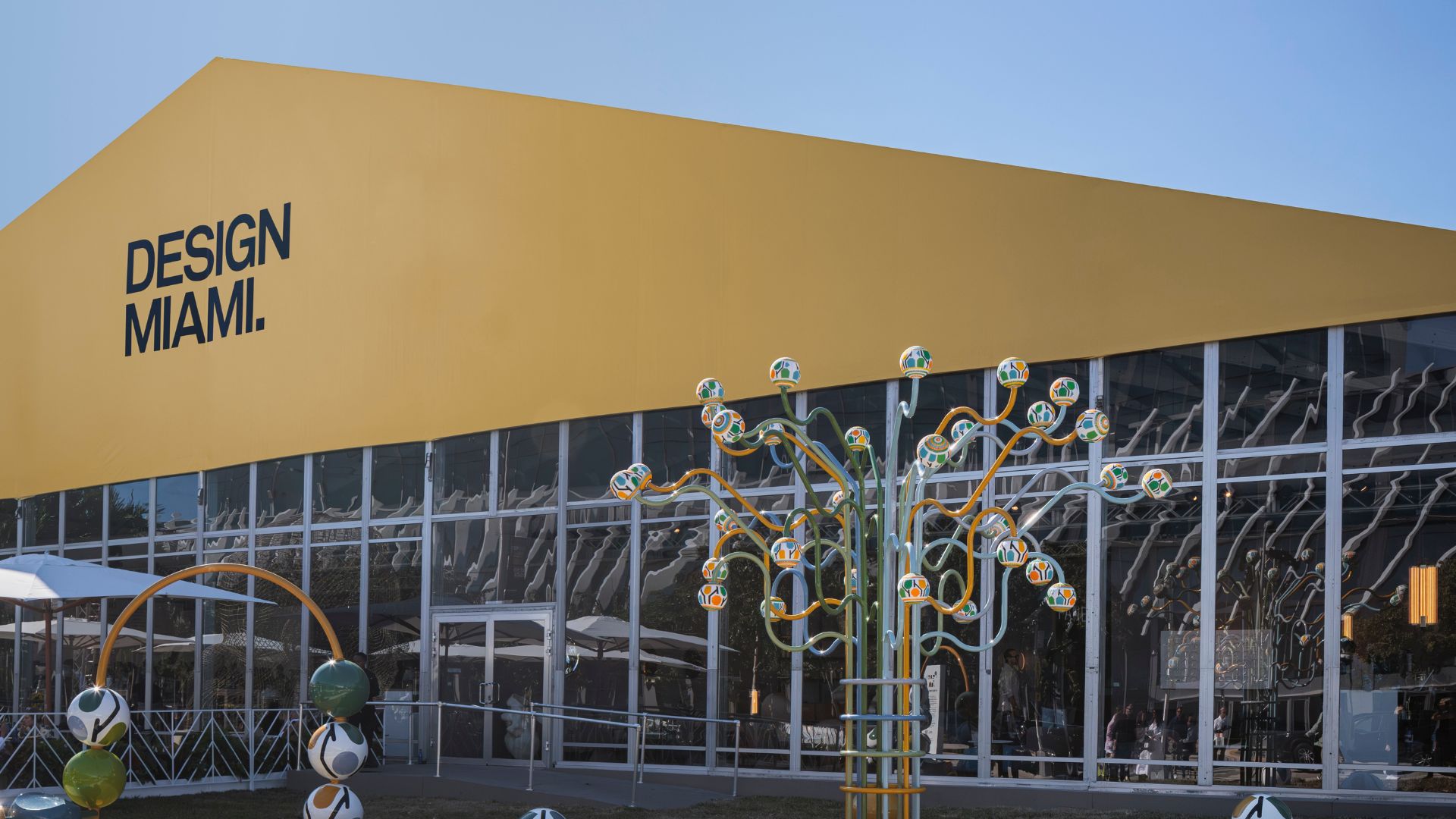 Everything you need to know about Design Miami 2025
Everything you need to know about Design Miami 2025The collectible design fair returns to Miami Beach in December for its 21st edition, alongside a vast array of art and cultural events across the city
-
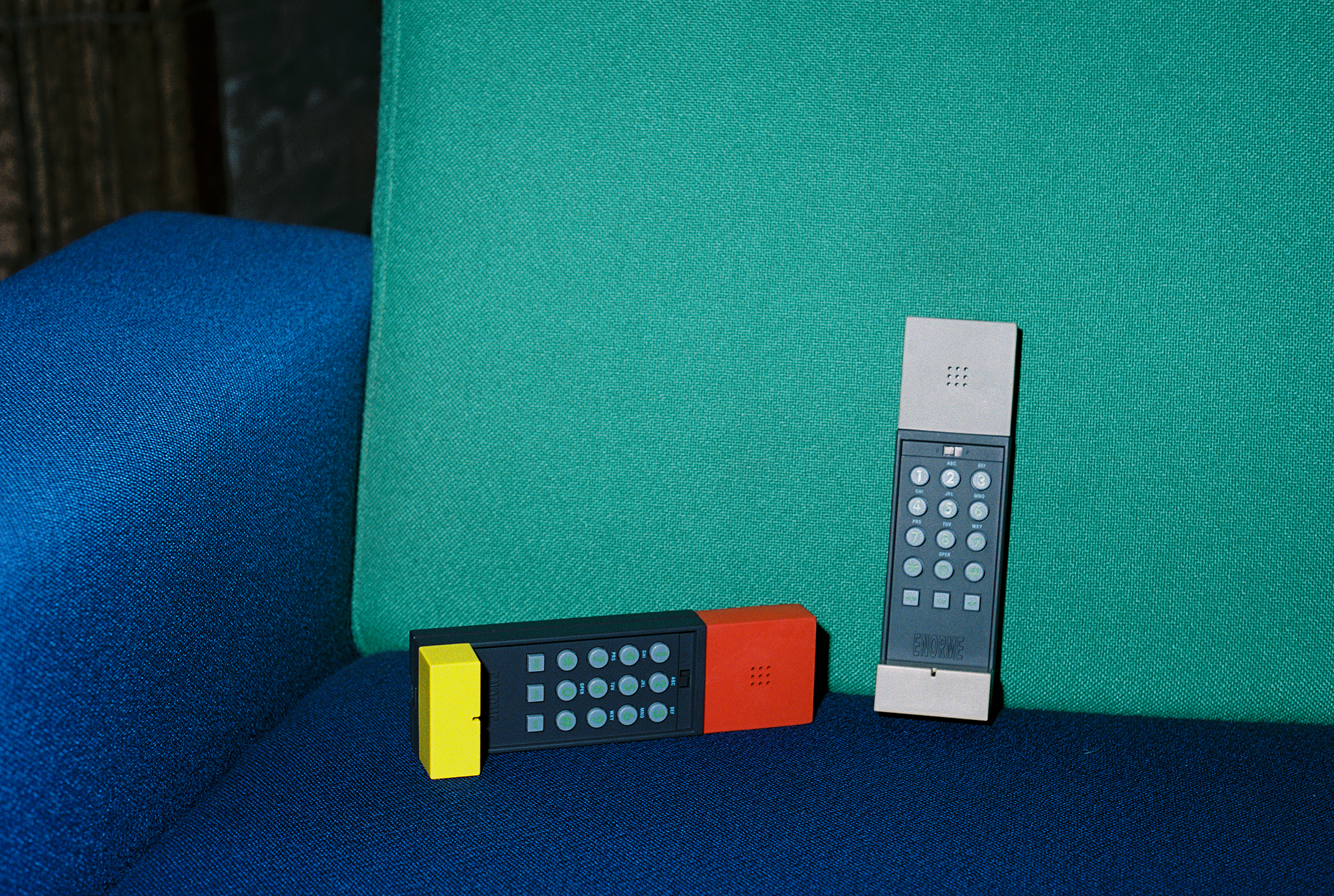 Basic.Space launches its first IRL shopping event – in an empty West Hollywood mall
Basic.Space launches its first IRL shopping event – in an empty West Hollywood mallWith the launch of its first in-person event in LA this weekend, the e-commerce platform is looking to bring collectible design to a whole new audience
-
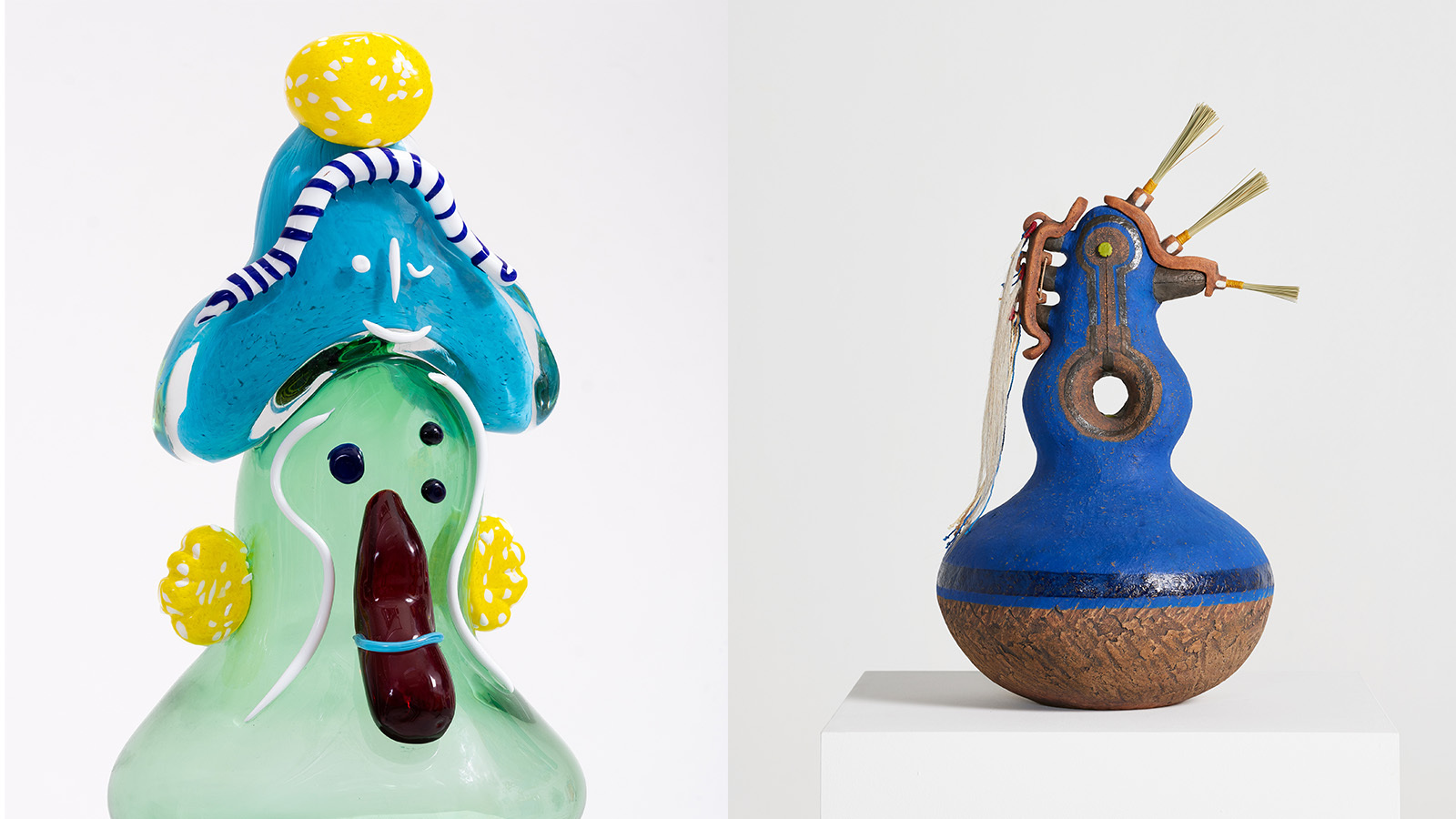 Design Miami 2024 is alive with possibility: here are 14 things to see
Design Miami 2024 is alive with possibility: here are 14 things to seeDesign Miami 2024 opens 4-8 December – let Wallpaper* guide you to the highlights, from dazzling installations to plump sofas and anthropomorphic sculptures
-
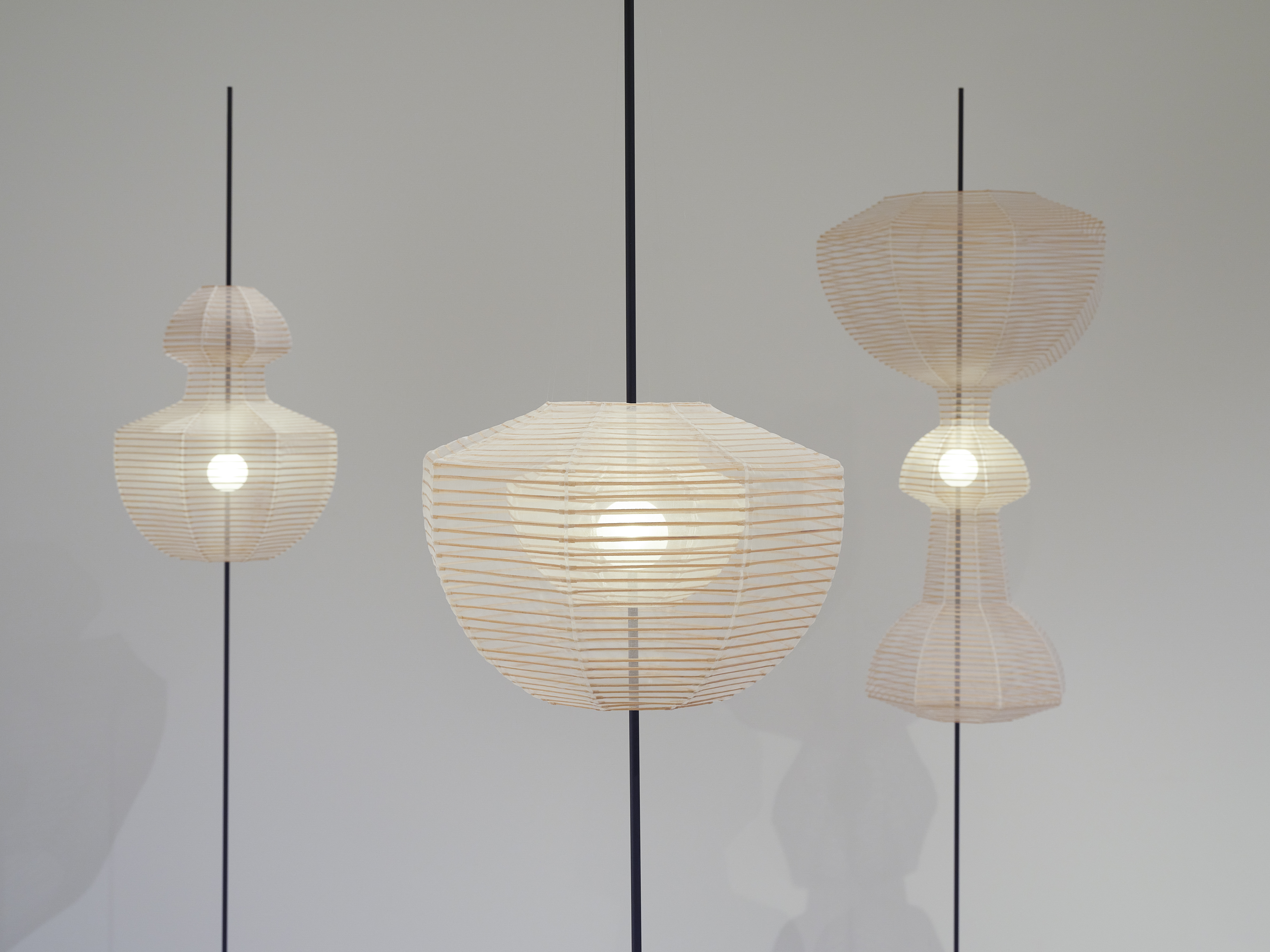 Nendo’s collaborations with Kyoto artisans go on view in New York
Nendo’s collaborations with Kyoto artisans go on view in New York‘Nendo sees Kyoto’ is on view at Friedman Benda (until 15 October 2022), showcasing the design studio's collaboration with six artisans specialised in ancient Japanese crafts
-
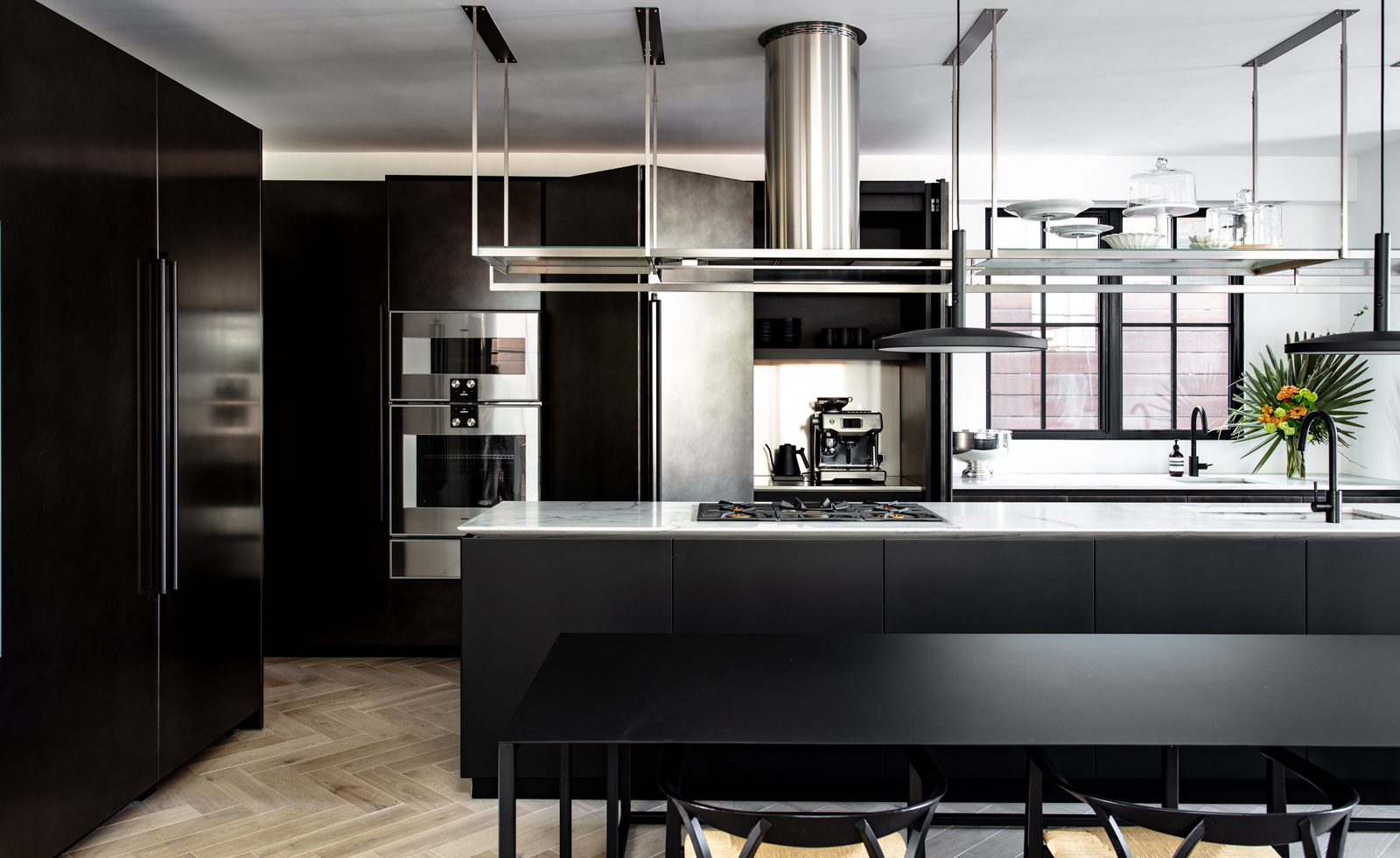 Italian craftsmanship comes to Los Angeles in this eclectic Venice Canals apartment
Italian craftsmanship comes to Los Angeles in this eclectic Venice Canals apartmentBoffi Los Angeles celebrates a juxtaposition of texture throughout a waterside bolthole
-
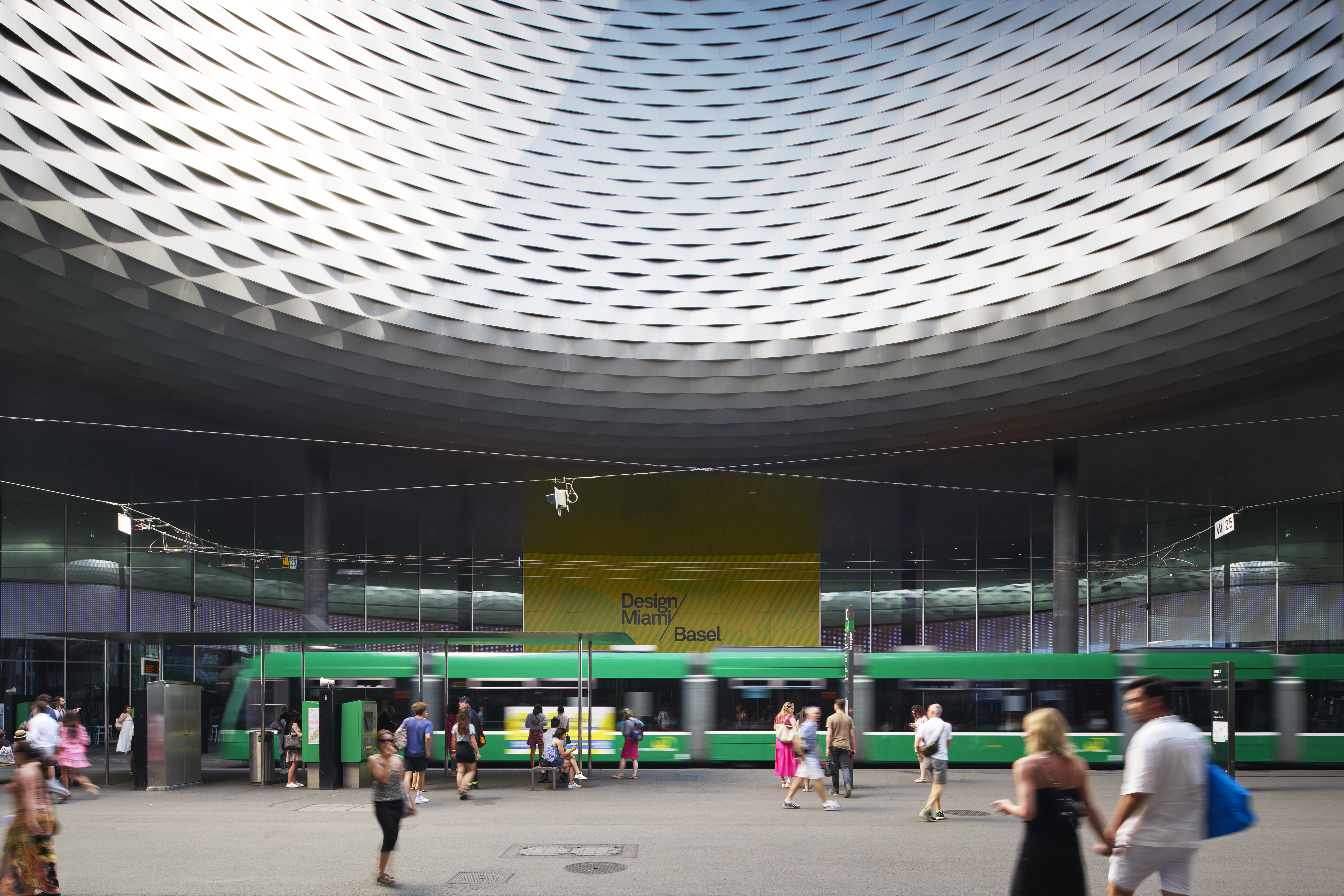 Design Miami/Basel 2022 explores the Golden Age
Design Miami/Basel 2022 explores the Golden AgeDesign Miami/Basel 2022, led by curatorial director Maria Cristina Didero, offers a positive spin after the unprecedented times of the pandemic, and looks at the history and spirit of design
-
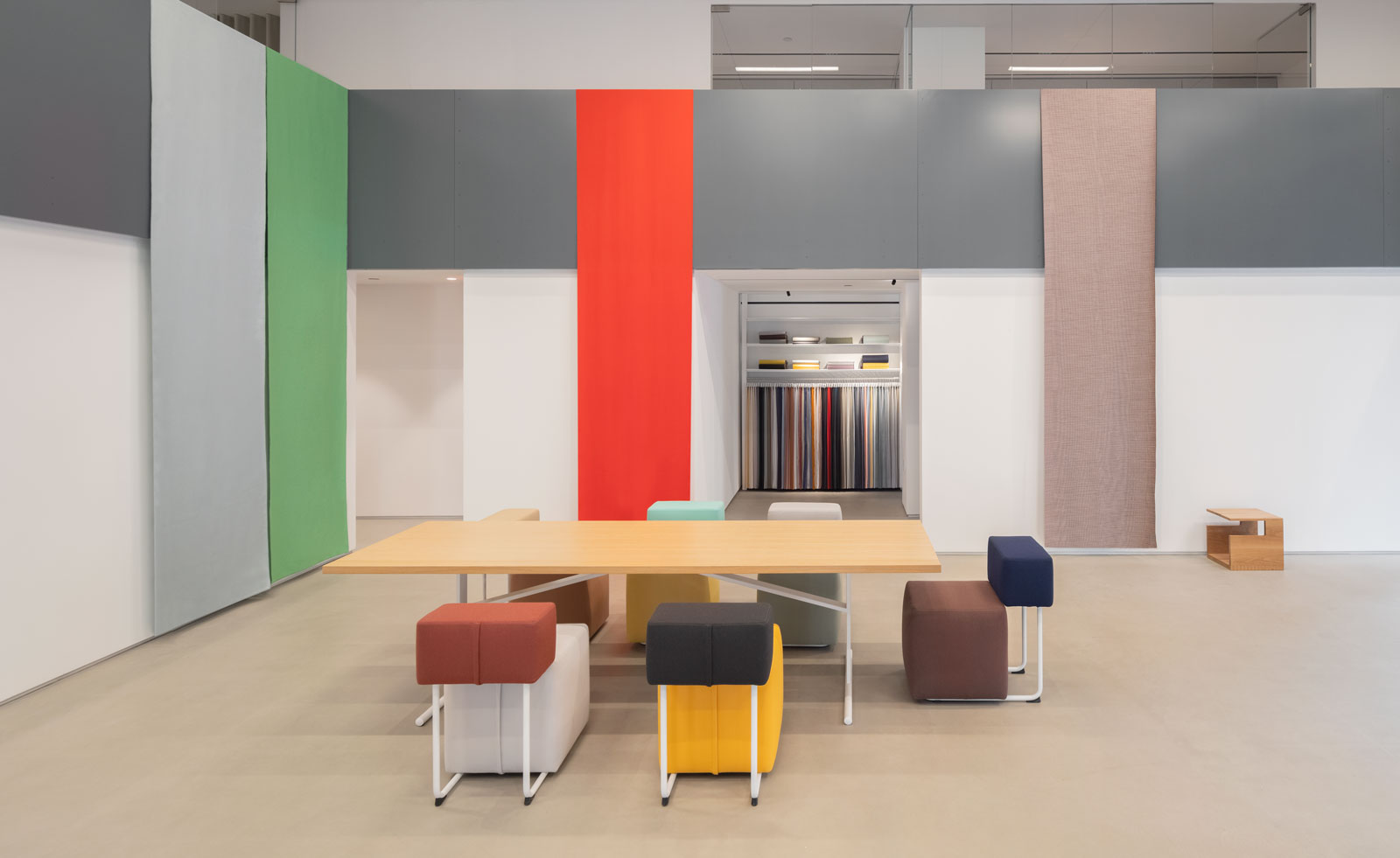 Kvadrat’s flagship New York showrooms encompass colourful design codes
Kvadrat’s flagship New York showrooms encompass colourful design codesIndustrial designer Jonathan Olivares and architect Vincent Van Duysen have worked with Danish textile brand Kvadrat on the vast new space, also featuring furniture by Moroso
-
 What to see at New York Design Week 2022
What to see at New York Design Week 2022Discover Wallpaper’s highlights from New York Design Week 2022 (10 – 20 May 2022): the fairs, exhibitions and design openings to discover